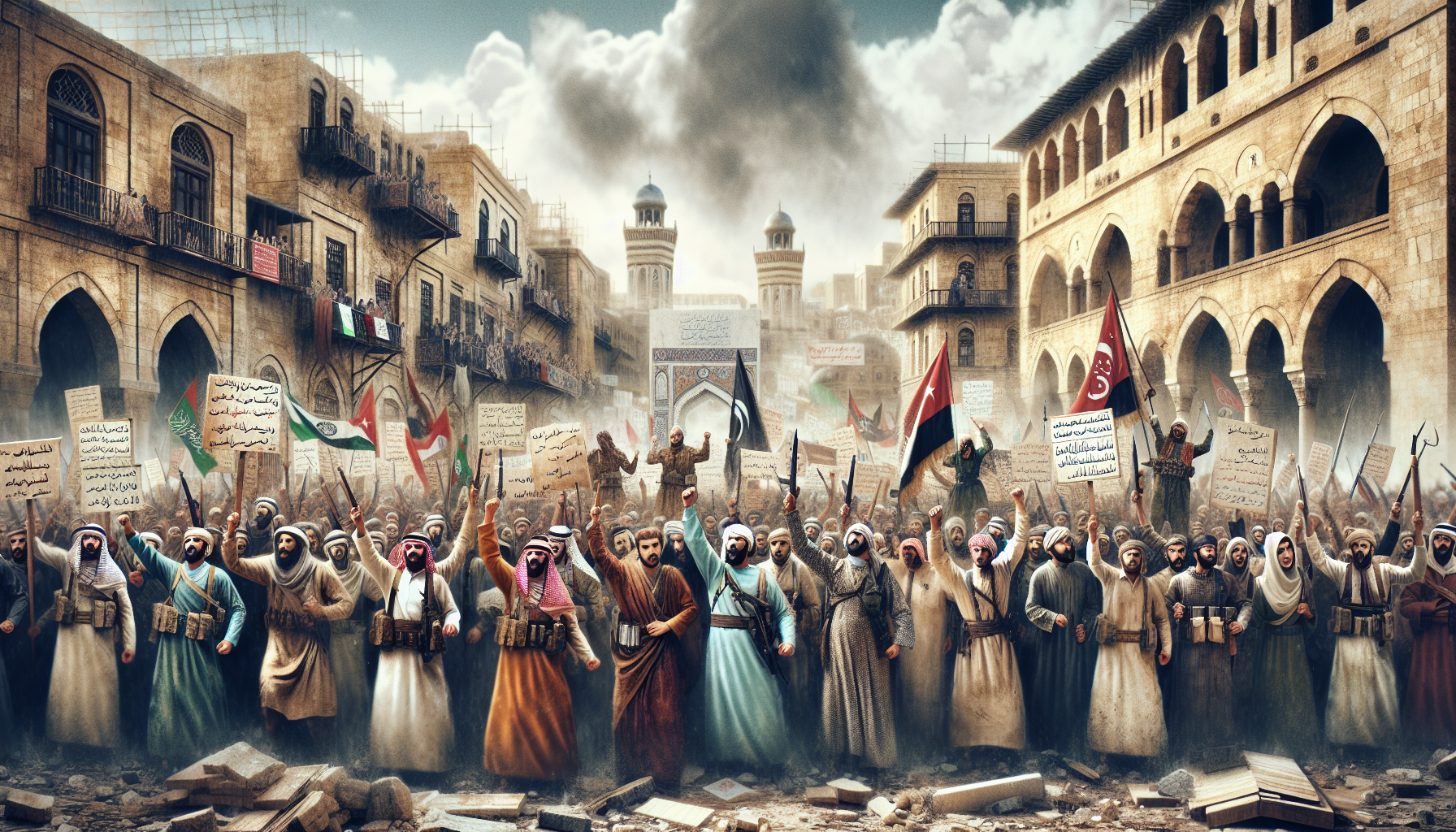Advertisements
Popular movements have always played a key role in Eastern history, marking periods of revolution and resistance that have left a lasting legacy. These movements have been driven by a variety of motives, including the search for freedom, social justice, and equality. In this article, we will explore some of the most iconic popular movements that have shaped Eastern history and influenced the course of events.
From ancient times to modern times, the East has been the scene of countless revolutions and resistance movements that challenged the status quo and promoted significant changes in society. These movements involved people from diverse backgrounds and social classes, united by a common goal of transforming their realities and guaranteeing their rights.
Over the centuries, Eastern popular movements have been marked by confrontations with established authorities, mass demonstrations, strikes, revolts and even civil wars. These collective actions were often violently repressed, but they left a legacy of resistance and struggle that inspired future generations to continue fighting for their ideals.
Advertisements
By analyzing these popular movements that marked Eastern history, it is possible to understand the importance of popular mobilization in promoting social and political change. Resistance and the fight for justice and equality continue to be current and relevant themes, demonstrating that the history of Eastern peoples is marked by a constant search for freedom and dignity.
Revolution and Resistance: Popular Movements that Marked Eastern History
Revolution in China
The Cultural Revolution in China, led by Mao Zedong in the 1960s, was a movement that sought to eliminate the remnants of feudalism and promote equality between social classes. However, what began as an attempt at reform ended up turning into a period of persecution, violence and repression.
- Persecution of intellectuals and artists
- Ideological indoctrination campaigns
- Repression of any form of opposition
Arab Spring
The Arab Spring was a series of protests and revolutions that occurred in several countries in the Middle East and North Africa starting in 2010. Protesters called for democracy, freedom and social justice, challenging authoritarian regimes that had been in power for decades.
- Tunisia: where it all began
- Egypt: the fall of Hosni Mubarak
- Libya: Civil War and the Fall of Muammar Gaddafi
Umbrella Revolt
In Hong Kong, the Umbrella Uprising was a pro-democracy movement that took place in 2014, when thousands of protesters occupied the city's streets in protest against Chinese government interference in local elections. The use of umbrellas as a form of protection against riot police became a symbol of resistance.
Advertisements
- Occupation of the city's main roads
- Clashes with the police
- Demands for more democracy and autonomy

Conclusion
In short, the popular movements of revolution and resistance that have marked Eastern history are reflections of the search for equality, freedom and social justice. The Cultural Revolution in China, the Arab Spring and the Umbrella Uprising in Hong Kong are examples of how people rose up against authoritarian regimes, fighting for significant changes in their societies.
Despite cultural differences and specific contexts, these movements share the determination and courage of protesters to challenge the status quo and demand better living conditions. The persecution of intellectuals in China, the overthrow of authoritarian leaders in Egypt and Libya during the Arab Spring, and the occupation of the streets of Hong Kong in search of greater autonomy are all milestones that demonstrate the strength and resilience of popular movements.
Therefore, it is essential to recognize the importance of these events in Eastern history, which left a legacy of resistance and struggle for fundamental rights. The memory of these movements should serve as an inspiration for future generations, reminding us that the voice of the people has the power to bring about significant changes and impact the course of history.
Popular movements in Eastern history have played a crucial role in the social, political and cultural transformation of many nations in the region. The struggle of oppressed populations against authoritarian and unjust regimes has been a constant throughout the centuries, reflecting the collective strength and determination of citizens seeking change. Popular mobilization in East Asia has not only challenged established power structures, but has also inspired similar movements in other parts of the world, highlighting the universality of the desire for freedom, dignity and human rights.
A striking example of this is the Taiping movement in China, which challenged the imperial rule of the Qing dynasty in the 19th century. Although the movement ended in tragedy and destruction, its strength and determination reflected popular dissatisfaction with the living conditions of the Chinese people at the time. Leaders of the movement, such as Hong Xiuquan, called for a radical reshaping of society, promoting equality and the redistribution of wealth. The government’s response was brutal repression, but the courage and revolutionary spirit of the protesters influenced later movements in Chinese history, including the revolutions of the 20th century.
Another significant example is the Indian independence movement, led by figures such as Mahatma Gandhi. Nonviolent resistance and the struggle for self-sufficiency were the cornerstones of this popular mobilization that culminated in the country’s independence in 1947. Gandhi’s philosophy inspired peaceful resistance movements around the world and became a symbol of the struggle for justice without resorting to violence. Peaceful protests, such as the Salt March, were turning points that demonstrated the power of popular unity and the strength of a movement led by ordinary citizens, challenging the tyranny of British colonialism.
Furthermore, the Chinese Cultural Revolution, led by Mao Zedong in the 1960s, is an example of how popular movements can be manipulated for political ends. Although it began with the goal of rejuvenating Chinese society and eliminating elements deemed “counterrevolutionary,” the movement resulted in serious human rights violations, with millions of people being persecuted, tortured, and killed. The Cultural Revolution is a reminder that popular mobilization can be distorted by leaders with authoritarian interests, leading to devastating consequences.
In more recent times, the Beijing Spring of 1989 and the Tiananmen protests demonstrated the Chinese people’s continued struggle for freedom of expression and human rights. Despite violent repression by the government, the protesters, mostly students, remained steadfast in their demand for political reform and democracy. Although the movement was brutally broken up, the Tiananmen protests remain a global symbol of resistance against authoritarian regimes.
These examples demonstrate that popular mobilization in East Asia has been a transformative force, generating social, political, and even cultural change. Resistance to authoritarian regimes, the struggle for social justice and equality, and the pursuit of freedom and human rights continue to be central themes in popular movements in the region. The courage and determination of protesters in historic confrontations have had a lasting impact, inspiring current and future generations to continue the struggle for a more democratic and inclusive world.
It is essential that the history of resistance and popular mobilization be remembered and celebrated, as it teaches us about the importance of the people’s voice in building a better future. The lessons learned from these movements can help build more just, resilient and inclusive societies, where people have the chance to express themselves and fight for their fundamental rights.




